Before moving to England, Kai Havertz was considered favorably by plenty of recruiters across Europe for what seemed to be unquestionable talent. Chelsea decided it was a bet worth taking and laid out a substantial £75 million to prize the German away from Bayer Leverkusen and other wealthy suitors.
However, during his three years at West London, Havertz did not realize his potential. Fans began writing him off as their frustration grew after Havertz only showed glimpses of his abilities – struggling to produce consistent performances.
Despite scoring the winning goal in the Champions League final, Havertz accrued an underwhelming goal and assist tally for Chelsea that justified the general reproval of the fans.
In the hope of a fresh start, Havertz shifted sides in London by moving north of the capital and joined Arsenal in the summer of 2023. The early signs suggest that this might have just been the perfect step he could have taken for his career.
Finding the Ideal Role
When Havertz exploded in the Bundesliga at Bayer Leverkusen, he played as a central creator with the license to roam. The German international had an impressive ability to pick the right pass, identify space, and cleverly crash late into the box, which was stunning for his age.
Speaking to Marca in 2019, Havertz said, “I’ve played in many other positions, but I prefer to play in the center, where I have more of the ball. My dream will always be to wear the No.10 one day at my club”.
Although the hope was perhaps to continue to be an attacking midfielder for Chelsea, for some odd reason, several managers tried and tested him in every position but that.
Thomas Tuchel attempted to reshape Havertz by playing him as a false nine, for which he said, “Does he need to settle on one special position? Or is he kind of a hybrid player? Today, I would say he’s in between a nine and a 10, something in between.”
“He’s very comfortable in the box, he’s very comfortable in high positions, he’s very good at offensive headers, he has good timing to arrive in the box, good finishing, good composure in the box, around the box, and very comfortable in high positions so between nine and 10.”
However, contrary to the expectations of Tuchel, Havertz never settled into that role and struggled to score goals – a persistent issue throughout his time at West London – recording only 19 Premier League goals in 91 matches for the Blues.
Other influential factors played a part in his underwhelming tenure at Chelsea, ranging from individual troubles to uncontrollable external instabilities. At Arsenal, Havertz finds himself in a calm and steady environment where the club has a clear sense of direction.
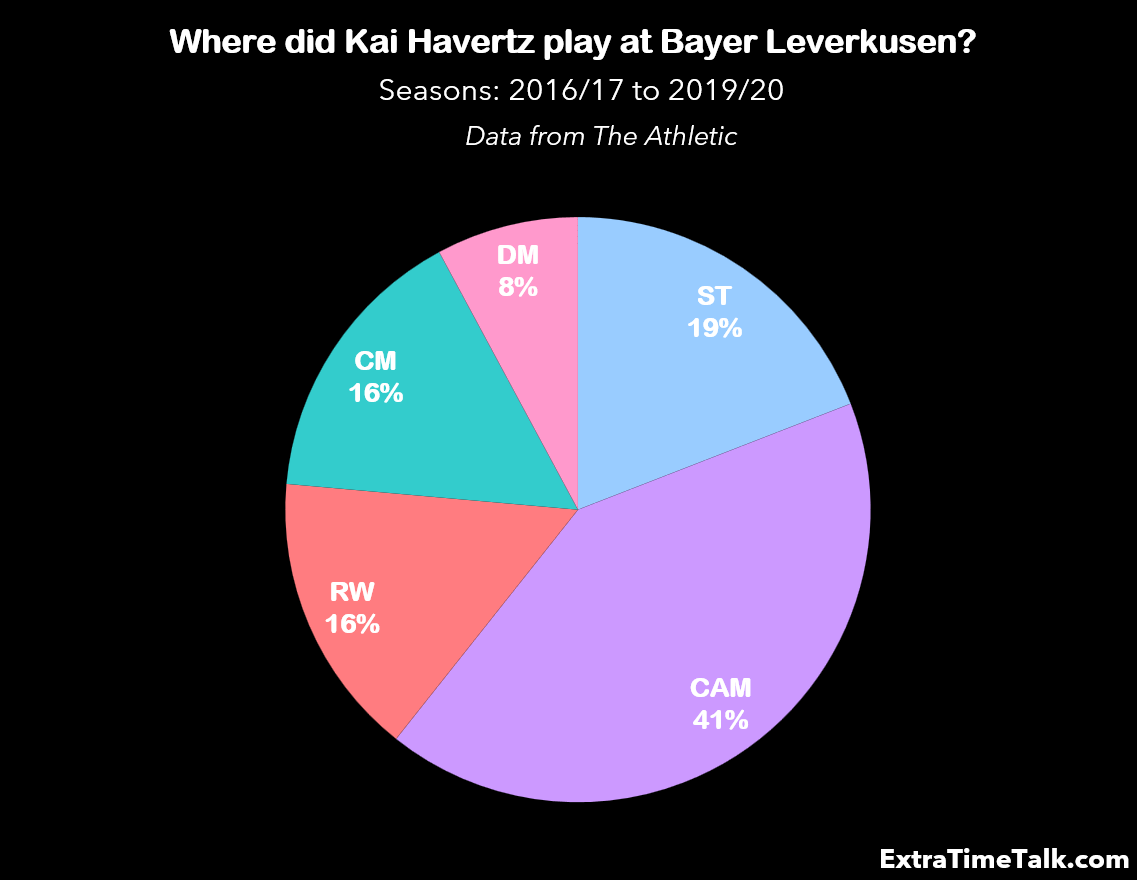
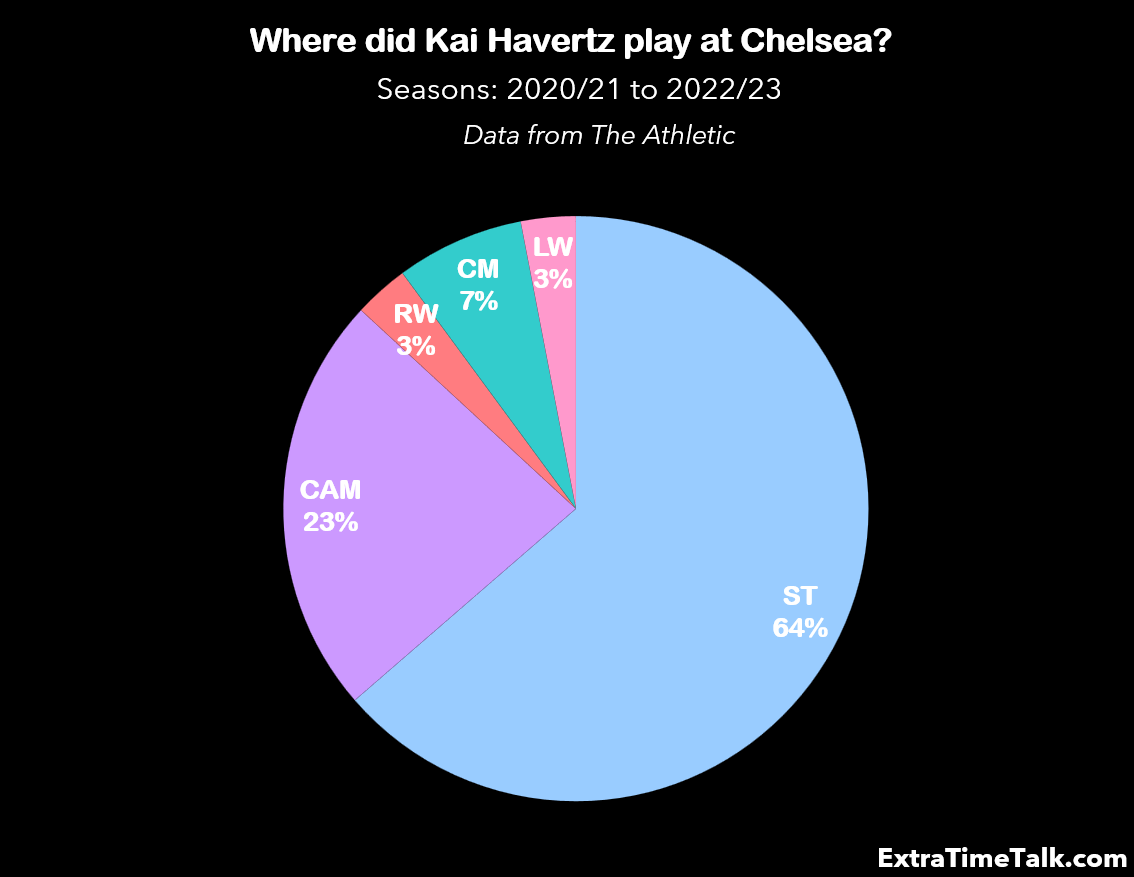
Mikel Arteta signed Havertz to play in the position left vacant by former club captain Granit Xhaka, who left in the summer for his successor’s prior team – Bayer Leverkusen. Havertz was not meant to be a like-for-like replacement for the Swiss but instead represented a tweak to the Arsenal tactical system.
This modification was to tailor a role more appropriate to the strengths of Havertz, and although it was not successful from the offset, it now seems to be working.
The Left-Sided No.10
With club captain Martin Odegaard prospering on the right half-space channel last season, it was implausible to place Kai Havertz in that position. The only spot available was the creative role on the left side.
Over the past few months, Havertz has found comfort in this new position and is gradually establishing himself as a regular starter for the Gunners.
Although his recent success has coincided with an uptick in goals – scoring more than half of what he accrued in the entirety of last season – there are a few intriguing statistical variances in the underlying data.
Firstly, his shot volume and shots on target figures have significantly dropped this season with a minor deviation in xG (expected goals) per shot – meaning that Havertz is gaining fewer but the same quality of chances and is increasingly efficient in front of goal – reflected by the ‘conversion efficiency’ (goals – xG) bar graph.
Secondly, the expected assisted goals (xAG: xG which follows a pass that assists a shot) value has reduced compared to the last two seasons, showing that Havertz is not yet relied on for the final killer pass, unlike Odegaard, who delivers twice the output at 0.18 xAG per game.
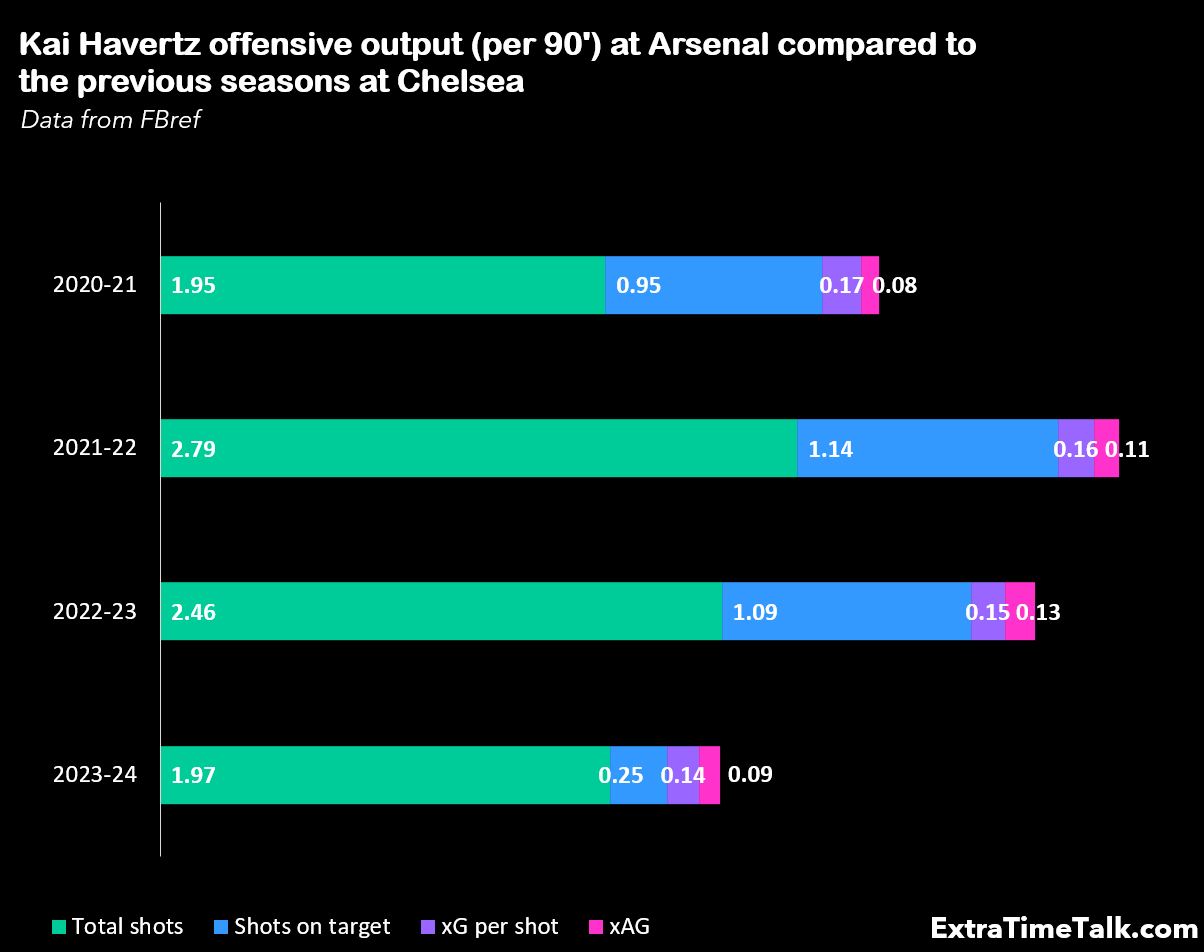

When diving further into the underlying numbers, we see that although Havertz has maintained an identical volume of touches at Arsenal as he did at Chelsea (44.1 per game in 2022-23 versus 44.2 in 2023-24), his contributions are more influential.
For example, the number of passes attempted is almost the same (33.7 per game in 2023-24 compared to 31.4 in 2022-23), but a large share of these are being made from threatening positions and played into the penalty box.
Therefore, Havertz may not be playing the final pass but is more involved in chance creation in the penalty box than in the prior campaign.
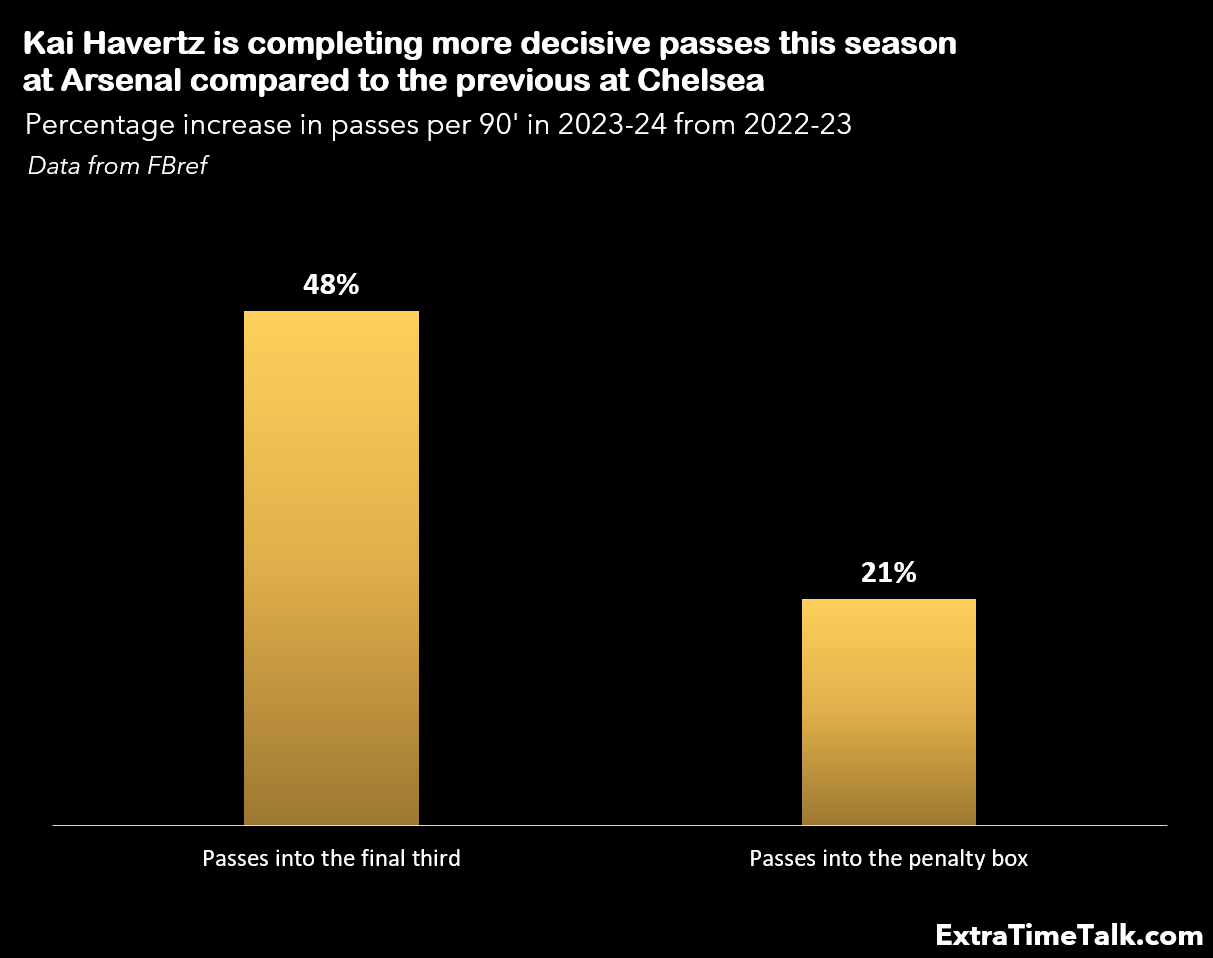
Furthermore, this role allows Havertz to find pockets of space and execute timely runs to crash the penalty box – a standout strength of the German that was a regular feature of his goals at Leverkusen.
For example, against Aston Villa this season, his late surge into the box led to a goal in the final few minutes of the match. However, it was ruled out later by VAR for a handball.
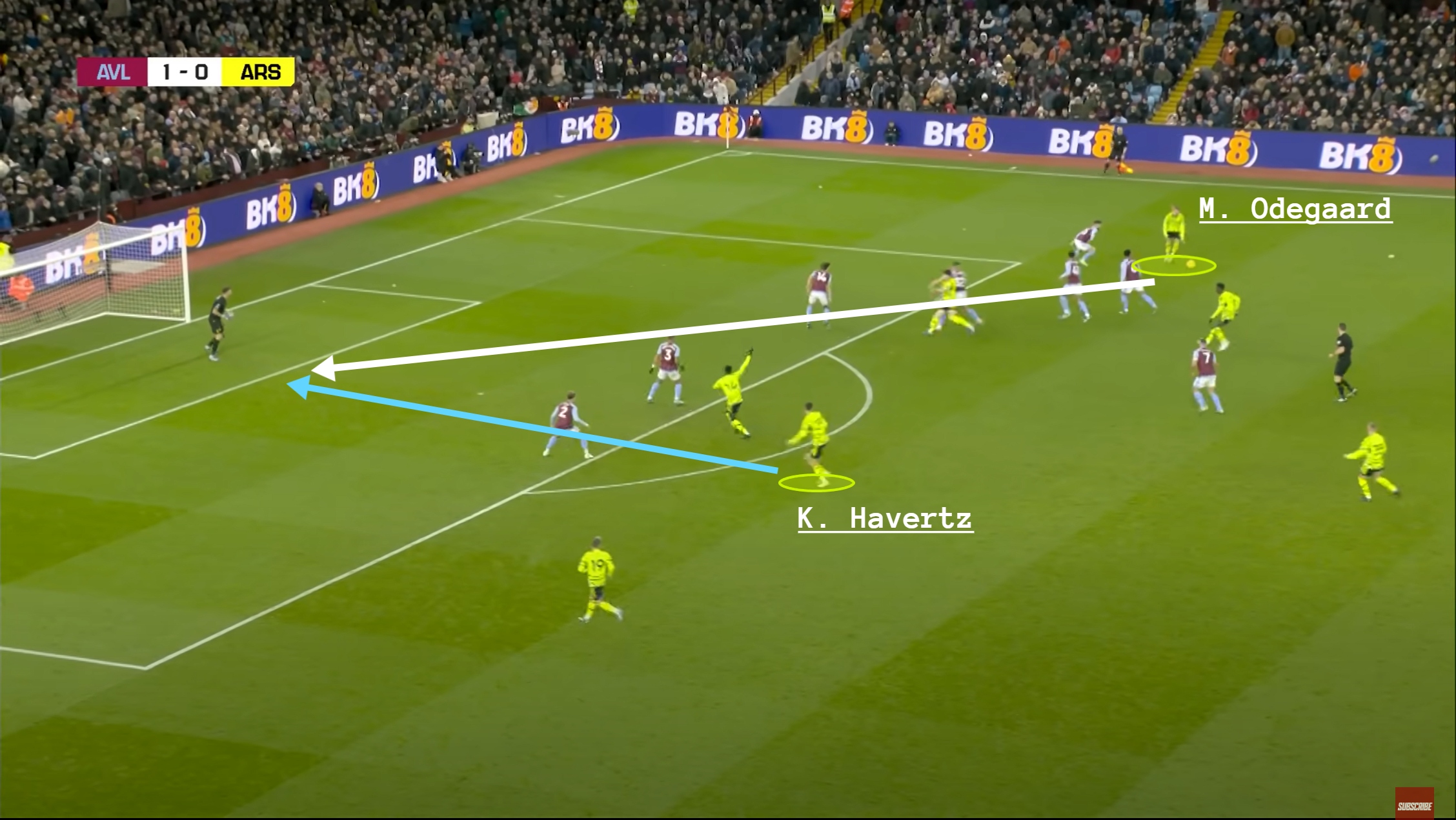
Defensive Machine
A strong suit in the skillset of the No.29 since his early days at Chelsea was his off-ball cognizance and relentlessness that managers relied on to develop their press from the front, which seems to be taken to another level under Arteta this season.
Havertz has lifted the volume of defensive actions performed, which has become a vital component of the Arsenal off-ball system – mirrored by the rise in tackles, interceptions, and loose ball recoveries.
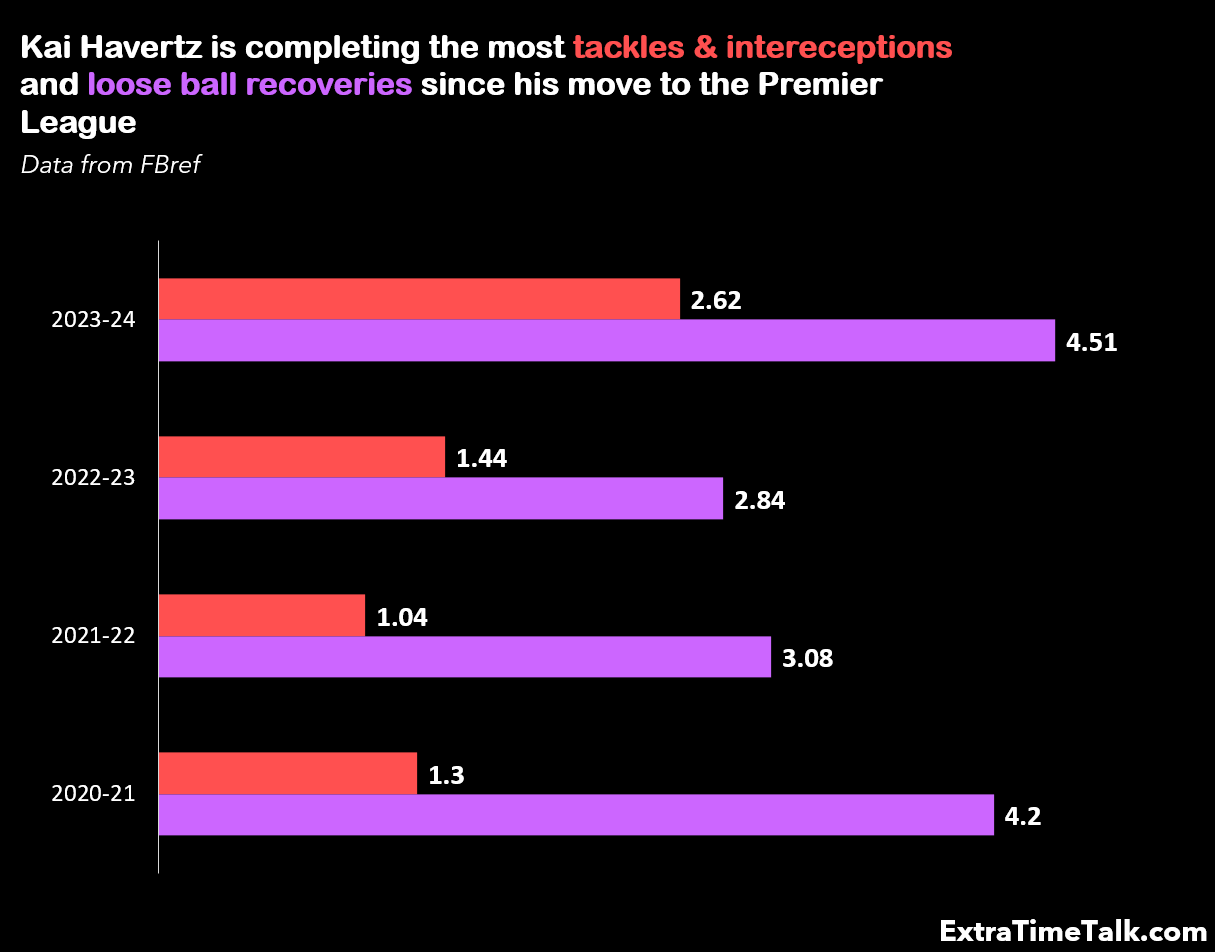
Below are two examples where Havertz displays his off-ball intelligence, which is crucial for the Arsenal high press.
Early in the second half against Aston Villa, Havertz nicked possession off Boubacar Kamara after cleverly reading the intent of Diego Carlos to cut through the middle – leading to a chance for Bukayo Saka.
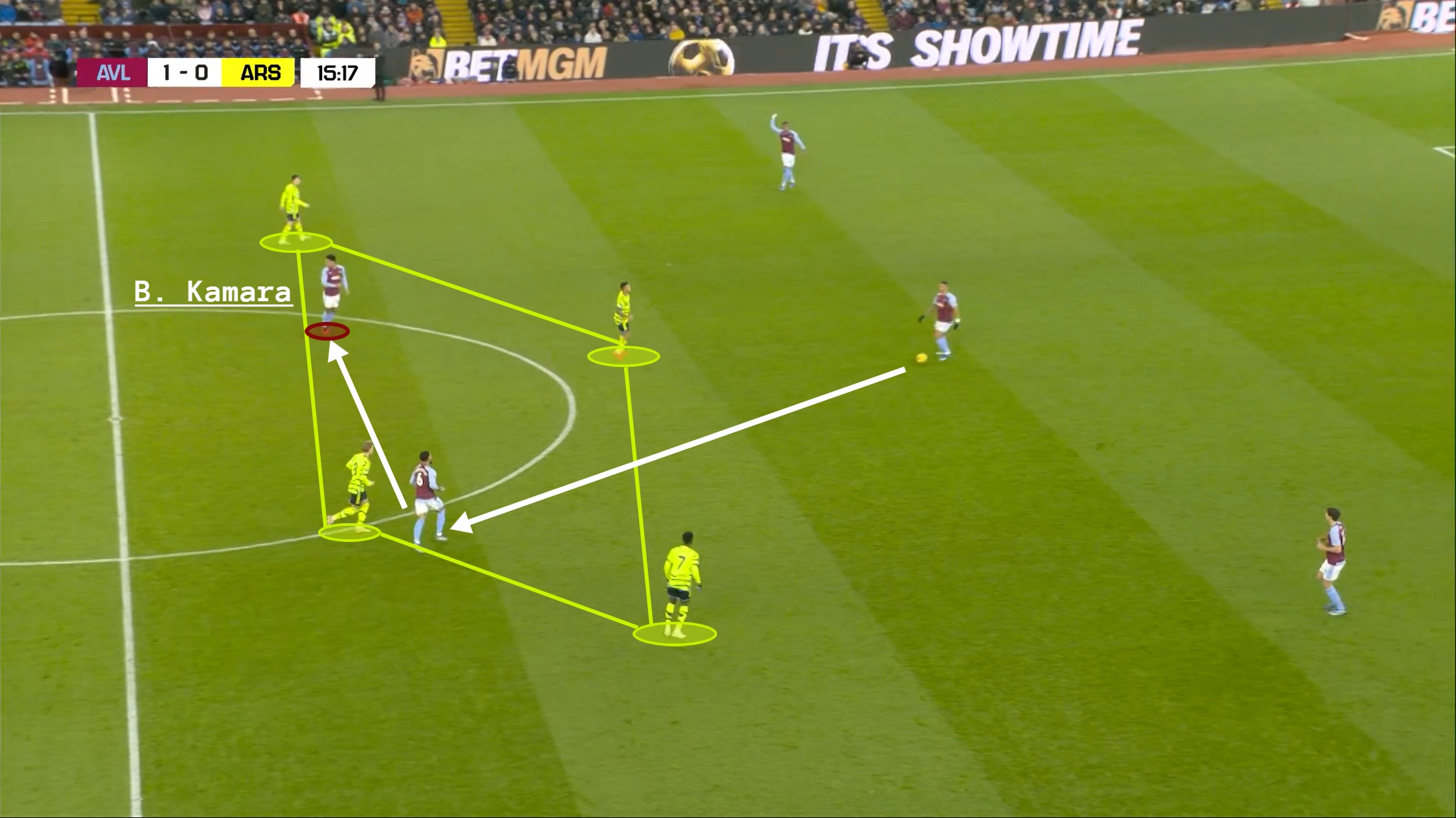

In a testing match against Wolves, Havertz exhibits his defensive awareness by cutting out a pass from Craig Dawson to Matheus Cunha that results in a shot from Leandro Trossard.
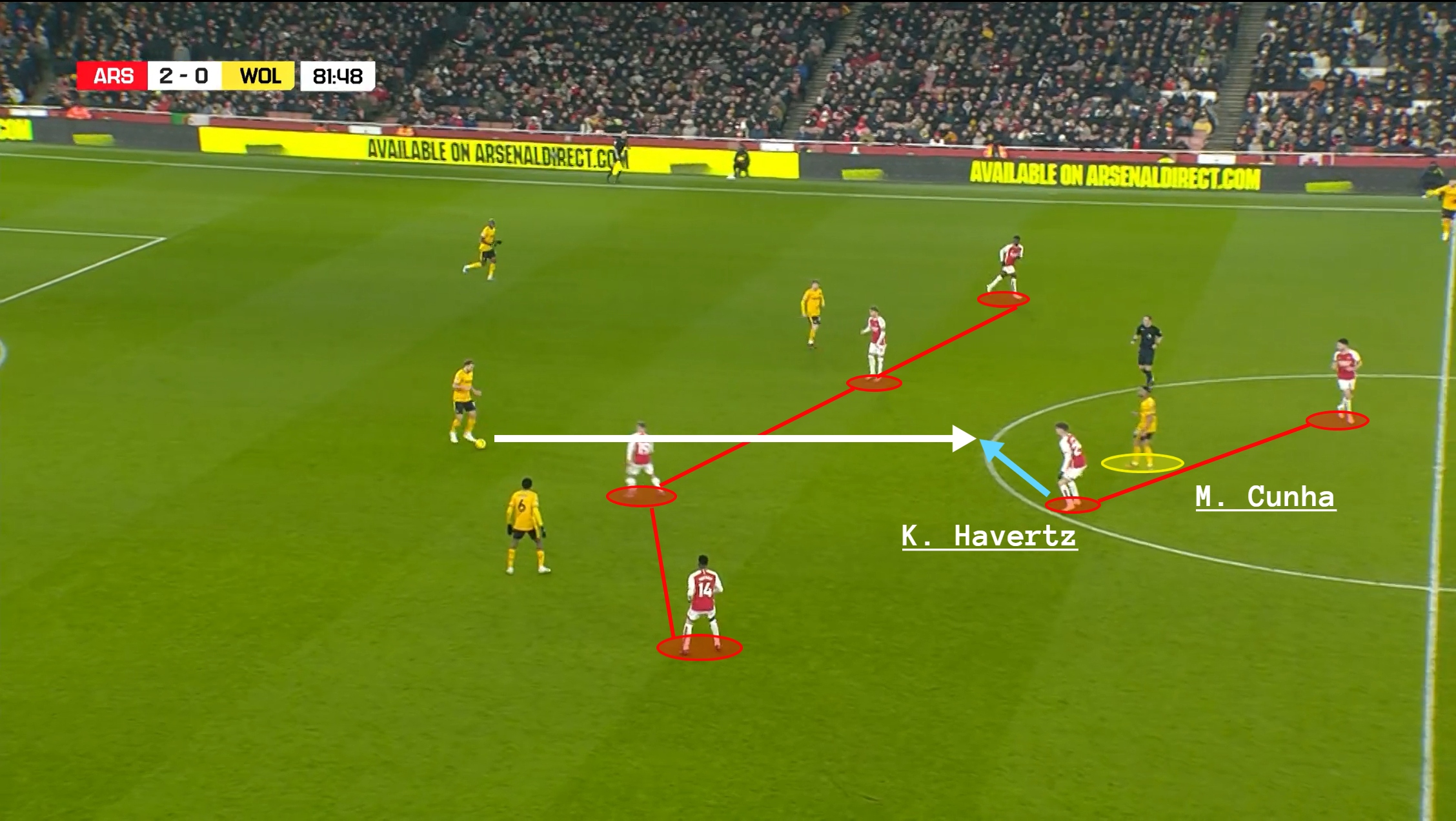
Room for Improvement
Kai Havertz offers Arsenal many upsides in and out of possession. His versatility allows Mikel Arteta to operate a fluid attacking line as the German is comfortable occupying the position of a striker and, at times, a winger.
Although recent performances are encouraging, and many fans seem to have taken a liking to him, Havertz has to maintain the current trajectory of improvement.
Mikel Arteta has already proved to have brutal expectations as he replaced Aaron Ramsdale in the summer, despite an excellent last season, with a more possession-fluent goalkeeper in David Raya.
Moving forward, competition for a position in the starting eleven is bound to increase as Arsenal bolsters their team with more attacking talent – making it paramount for Havertz to impress Arteta when given the opportunity.




